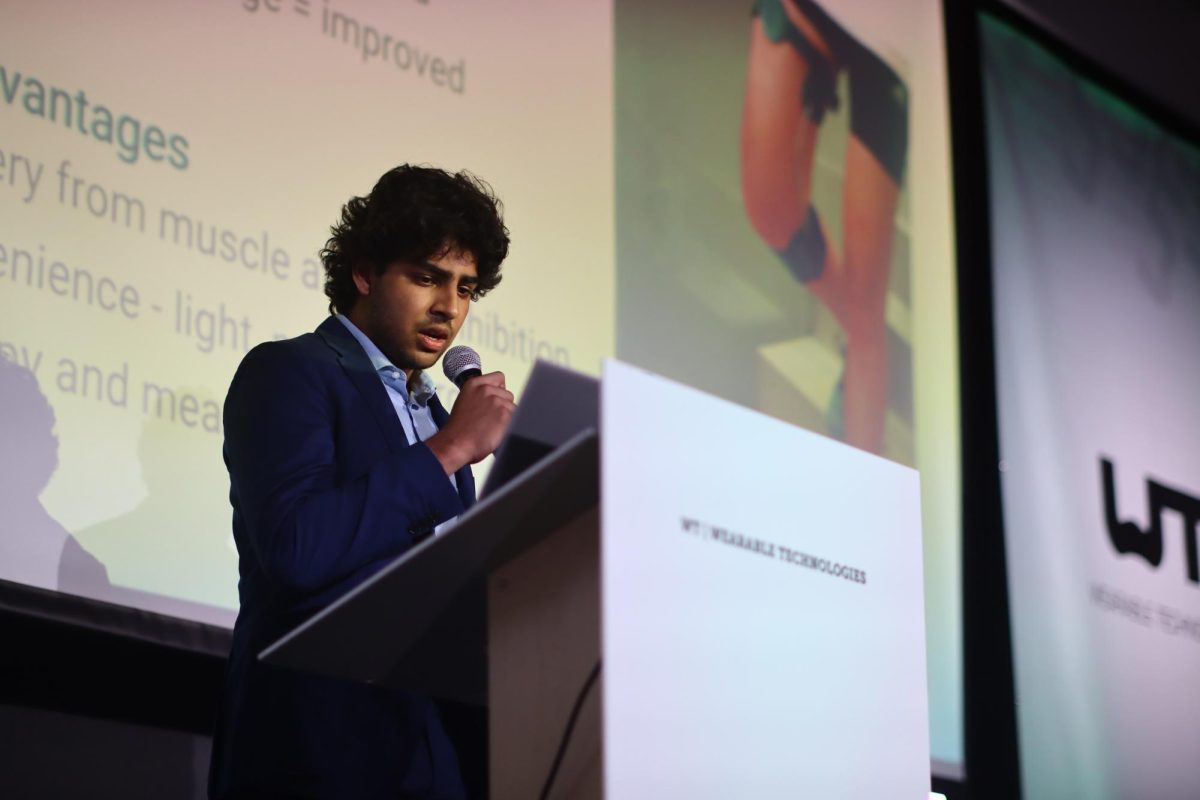In most U.S. schools, Section 504 of the Rehabilitation Act ensures that students with diagnosed disabilities get appropriate accommodations to promote their academic progress.
Another aim of the law is to create a classroom environment for students with minimal barriers to access.
Conditions such as anxiety, depression, attention deficit hyperactivity disorder and dyslexia often necessitate in-school arrangements such as extended testing time, separate testing environments or placing class notes and materials online.
The goal of these accommodations is to provide support and instructional alterations so that students with learning disabilities have the same access to classroom opportunities as their peers.
At Greenhill, learning specialists help families determine if their student might need evaluation for a learning difference or mental health issue. They then coordinate any arrangements the student may require within the classroom.
“Part of our goal is to ask questions to find the right resources, and one of those resources potentially could be a full evaluation,” said Upper School Learning Specialist Grace Kiang.
Acquiring Accommodations
Qualifying for these accommodations requires extensive disability and psychological testing by a psychologist or psychiatrist. These mental health professionals complete diagnostic paperwork and recommend appropriate classroom and testing adjustments to help mitigate the impact students’ disabilities may have on their educational success.
“Typically, a diagnostic evaluation involves both quantitative testing, like IQ testing, and achievement testing,” said Kiang.
After an evaluation, the psychiatrist recommends certain classroom accommodations to the student and learning specialists.
“Then you go to the learning specialist at Greenhill, and you come up with what accommodations you want based off the doctor’s recommendations,” said sophomore Lily Marshall, who has been diagnosed with dyslexia.
While the process for acquiring accommodations is relatively standardized, the variety of educational differences makes for a variety of individualized learning plans. Although Marshall benefits from accommodations commonly suggested for her disability, she has also developed some unique classroom solutions to facilitate learning.
“If I don’t understand how a question is worded when I read it, a teacher has to ask the question verbally in a different way,” said Marshall. “That’s an accommodation I came up with that was helpful for myself.”
Sophomore Maya Jagsi says some of her learning accommodations include having written test instructions, extra time and preferential seating, which are standard accommodations for students with learning disabilities. In addition to the classroom adjustments, Jagsi says she appreciates how the learning specialists advocate for student needs.
“The learning specialists have been helpful in making sure I have accommodations when I need them,” said Jagsi. “Especially during standardized testing, they’re there to make sure you’re in the right place.”
Even though students may have similar diagnoses, every person requires a thoughtful consideration of what in-class changes and tools will promote their learning and academic success.
“There are not one-size-fits-all for accommodations,” said Upper School Learning Specialist Honelynn Parker. “It’s not like a particular diagnosis results in the same accommodations for each student.”
Students typically have to undergo additional evaluations and diagnostic testing during regular school-mandated intervals to confirm their diagnosis has not changed and that the same accommodations are appropriate.
“I started getting [accommodations] in middle school and for me it was kind of complicated because I had to go through my ADHD testing,” said Jagsi. “You have to renew it every four years, so I had to do it twice in middle school and then once the summer of ninth grade so I could get it in high school.”
Ongoing Challenges
As much as learning accommodations create a more equitable school experience for those with disabilities, some students offer insights on how teachers can better administer accommodations to ensure that students, who don’t receive them don’t face inadvertent disadvantages.
Students without accommodations sometimes struggle to complete tests within 50-55 minutes, a duration intended to allow students with a time and a half accommodation to complete tests within the 80–minute class period.
“One thing I think is less good is when teachers keep the same amount of questions and cut the time for everybody else just to give extra-time people enough time to do it in class,” said Jagsi.
Teachers must also strive to make sure students who receive extra time have testing conditions where disruptions do not compromise their focus.
“I feel like it’s gotten better in our first year in high school when they decided that extra time testing had to be in one sitting,” said Marshall. “But previous to that, you would have to test a whole class period and take the rest another class period.”
In addition to this, the coexistence of extended test-taking and classroom instructions creates a unique struggle for teachers attempting to balance the needs of all students, according to students interviewed for this article.
“Teachers will very commonly talk a ton in your testing and continue lessons while you’re testing and not realize that people are still taking the test,” said Marshall.
Marshall says she feels that the COVID-19 pandemic exacerbated the issues students with learning disabilities face due to the nationwide educational shortfalls.
“I feel like some teachers are stuck in a grind mentality because we’re making up for COVID-19 and students having not learned anything,” said Marshall. “Some do this instead of having a more understanding mindset that COVID, something that hit all students very hard, hit kids with disabilities even more aggressively.”
According to a New York Times article, in the country’s wealthiest areas, the number of students with a 504 plan is double the national average. The higher rate of disability accommodations within wealthy communities raises questions about whether affluent parents simply have the resources to pursue accurate diagnoses, or whether these parents, in response to the stress of the academic demands their children face, seek out psychologists who will provide the diagnoses that lead to accommodations.
Students with 504 plans often face skepticism from classmates who are aware of the potential for abuse.
“I think that there’s a stigma around the kids who have learning accommodations because more people are cynical of whether people’s learning accommodations are actually real or not,” said Jagsi. “I think that cracking down on the people who are unfairly getting accommodations is something Greenhill needs to work on.”
Greenhill Privilege
Greenhill and many other well-resourced private and public schools have extensive staff and controls in place to ensure students receive thorough testing, specific diagnoses and comprehensive learning plans and accommodations.
Greenhill, for example, prepares a document known as a Learning Plan on each student with a diagnosed learning disability. This document, previously known as an Individualized Learning Assistance Plan or ILAP, is shared with teachers along with personalized instructions and approved accommodations.
“People in public schools who have a separate version of ILAPs may not have the privilege of accommodations that are pretty standard for people at Greenhill,” said Marshall.
In addition to this, many Greenhill students note the value of early diagnoses when parents and teachers recognize the signs of a learning difference or mental health issue and seek professional insight.
In many cases, students do not receive a diagnosis until later grades where greater scholastic demands more clearly expose their disabilities.
The smaller class sizes at private schools like Greenhill also facilitate teacher recognition of learning differences.
“My privilege was that I was diagnosed when I was pretty little,” said Marshall. “Most people don’t figure out they have learning disabilities until middle or high school or even adulthood.”
Even though independent schools have the financial resources and classroom advantages to identify and support students with disabilities, there is always room to become more fluent in knowing what accommodations are most appropriate and effective for each student.
“I think something that could be done is teachers could be more educated on how to help kids and have lessons and workshops on what accommodations actually mean and how they are utilized,” said Marshall.
While Greenhill teachers strive to create classrooms that balance the needs of students with and without accommodations, some students say the entire community needs to learn more about the specific challenges faced by peers with learning disabilities.
“Greenhill has made a lot of improvement, but there are still areas where teachers could be more educated and students could be more understanding of learning accommodations,” said Marshall. “It’s important for people to understand that the nature of accommodations like extra time are not just so that people get more time than others, but that it levels the playing field so students with disabilities can realistically have the same amount of time to process the material.”







